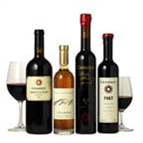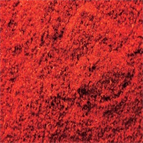Find methods for your needs
Refine by Feature
Displaying 1-5 of 13 results for Tag: wine
Determination of the Molecular Transformations and Pathways that Occur During the Winemaking Process
Instrument Type: LCMSMSDirect wine analysis was used to determine the molecular weight of the components and their variable content across the 5 samples in this study was observed. This work demonstrates the utility of analyzing complex mixtures without prior sample preparation by making use of the separation of HPLC combined with the High Resolution Accurate Mass (HRAM) of the Q Exactive quadrupole Orbitrap mass analyzer. The combination of these techniques provides a robust and confident means of profiling complex mixtures as well as successful identification of detected components.
Determination of 24 Pesticide Residues in Red Wine Using a QuEChERS Sample Preparation Approach and LC-MS/MS Detection
Instrument Type: LCMSMSRed wine is a rich source of phenolic antioxidants and is reported to reduce the risk of diabetes, cancer, Alzheimer's disease, and cardiovascular disease. To improve grape yields it is common practice in vineyards to use pesticides, such as fungicides and insecticides. This application presents a fast, easy, and cost-effective method for the determination of 24 pesticide residues in red wine using the QuEChERS extraction method (AOAC version), cleanup by dispersive solid-phase extraction (dSPE), followed by LC-MSMS analysis.
LC-MS Method Using Cloud Point Extraction for the Determination of Permitted and Banned Azo Colors in Liquid, Semi-liquid and Solid Food Matrices
Instrument Type: LCMSColors are food additives that are regulated in the EU, USA, and China. Only approved food colors can be used and others are banned such as some azo compounds, because of their potential carcinogenicity. In this Method, we describe a new Cloud Point Extraction (CPE) method for determining the presence of approved water soluble and banned fat soluble azo colors, followed by separation on a Thermo Scientific Hypersil GOLD column and detection with a Thermo Scientific MSQ Plus single quadrupole mass spectrometer.
Determination of Acrolein and Other Process Contaminants in Beer, Wine, and Potato Chip Matrices by Liquid Chromatography-Single Quadrupole Mass Spectrometry
Instrument Type: LCMSMSCarbonyl compounds are widely found in food products. Acrolein is the a,ß-unsaturated carbonyl compound also called prop-2-enal or acrylic aldehyde. Acrolein has a high volatility and very high reactivity.1 To evaluate risk assessment, more information on its occurrence needs to be generated. The aim of this study was to develop an in-house validated method for the determination of a wide range of carbonyl compounds to quantify these process contaminants in beer, wine, and potato chips using LC/MS.
Testing LC-MS System Robustness with Automated Sample Cleanup Using Red Wine as a Matrix
Instrument Type: LCMSMSTraditionally, LC-MS/MS has been used by the environmental and food industries for the identification and quantitation of these residues. However, this methodology typically requires extensive offline sample preparation, which can be time consuming and expensive. We test the robustness of an LC-MS system for an automated online preconcentration system using a dirty matrix.





